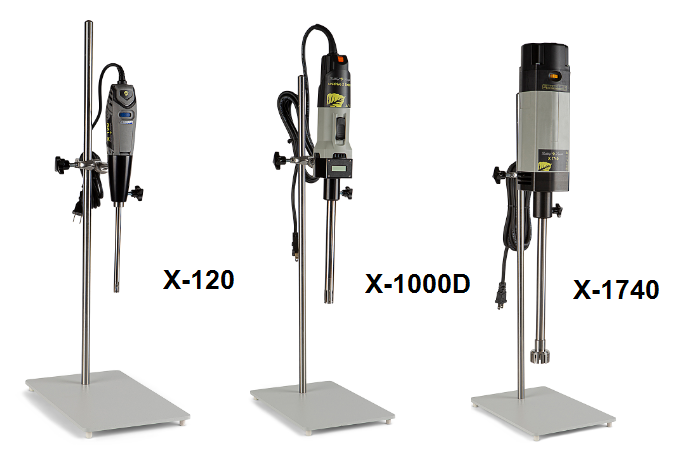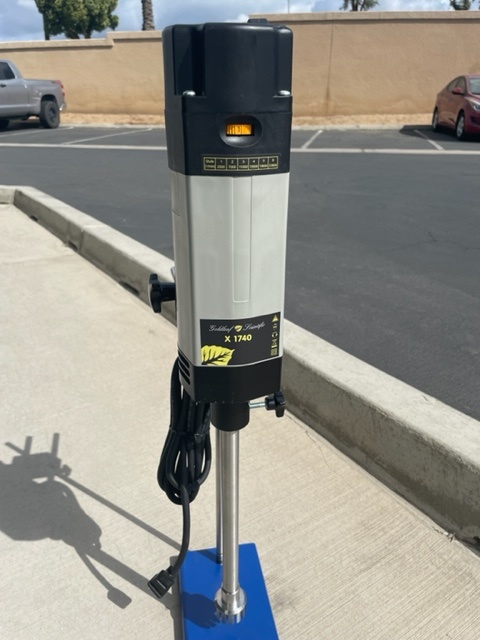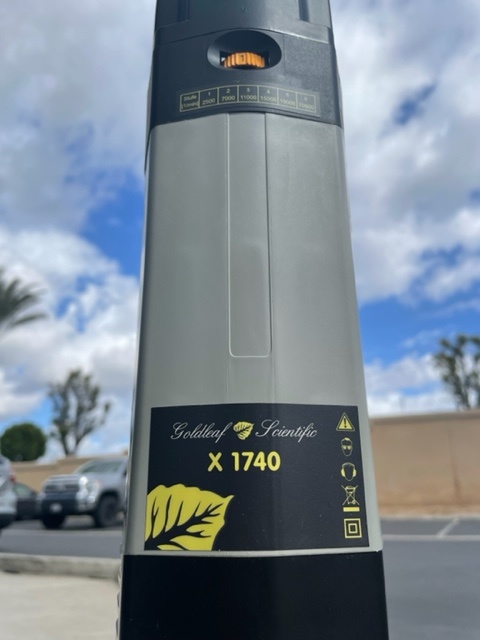You have no items in your shopping cart

24/7 Customer Service

Satisfaction Guarantee

Fast Delivery

Reasonable Price
Homogenizer Selection Guide
How to Choose a General Purpose Lab Homogenizer

Choosing a general purpose lab homogenizer starts with a clear understanding of what materials you work with and what you intend to accomplish. For example, laboratory homogenizers find wide application in
- pharmaceutical manufacturing – specifically R&D and pilot plant applications
- developing processes for food and food ingredient manufacturing
- formulating cosmetics and perfumes
- researching new chemicals and fertilizers
- preparing specimens for further study
Functions performed in these and related industries include particle size reduction, fast mixing and blending, emulsifying, dispersing and agglomerate disintegration.
Types of Laboratory Homogenizers
While this post focuses on rotor-stator general purpose homogenizers other lab homogenizers use different techniques to accomplish similar tasks. Commonly employed techniques include:
- sonicators – applying ultrasonic energy to homogenize samples
- bead mills that use glass or other types of beads to break down specimens
- paddle blenders
- high-pressure homogenizers that process under more extreme conditions
- and others
Which of these options work best for you will be based on a thorough understanding of how the process works, the materials being processed and the desired end result. Now to the subject at hand:


How Rotor-Stator Lab Homogenizers Work
The rotor-stator lab homogenizer design is among the most popular across a broad spectrum of industries. These units work by combining mechanical shearing and sonic energy (not ultrasound) in a way unique to materials processing in the lab. Rotors are powered by a small electric motor or compressed air and are available in several designs, all characterized by sharply-machined blades that rotate at high speed against the stationary stator, also equipped with sharp blades. The shearing action is how processing is accomplished.
The rotor and stator together are called the homogenizer or dispersing tools. Several options are available when it comes to choosing the dispersing tool configuration, all resting on what it is you want to accomplish. Fortunately, as with the hand-held electric drill, drive units for lab homogenizers will accept a variety of homogenizer configurations, greatly adding to their utility and value.
Except for designated hand-held units, general purpose lab homogenizers should be mounted on a support system for stability and safety. (A good idea for hand-held units as well.) This will keep the dispersing tool firmly in place in the proper position in the sample container and avoid potential breakage as well as spattering container contents across the bench.
Other Selection Criteria for a Lab Homogenizer
The above discussion applies to virtually any lab homogenizer. When it comes down to selecting a particular model points to keep in mind include:
- power (watts)
- rotor speed (operator controlled in RPM)
- maximum sample volume
- digital display (optional on some units)
- ease of operation (switch-out of dispersing tools, cleaning, maintenance…)
A good general purpose lab homogenizer is the 1000-watt X1000 Unidrive model available from Goldleaf Scientific. Operating at 6 electronically stabilized speeds from 4,000 to 33,000 RPM it can process samples from 0.1 ml to 5 liters in size.
This particular unit accepts up to seven combinations of interchangeable shaft and generator assemblies (dispersing tools) making it a truly versatile lab homogenizer. The companion X1000D is shipped with a digital display.
Rotors are attached to the rotor shaft using a simple wrench and are powered by the X1000 drive motor. The shaft is pushed into the drive motor housing until a click is heard signifying that the drive pin is engaged. The sharply machined blades compliment the equally sharp machined slots in the stator, which is hand screwed on the rotor shaft tube, in turn firmly attached to the drive motor housing by a holding screw.
When activating the equipment always start at the lowest RPM then gradually increase speed until the desired RPM is achieved. The slanted slots in the rotor grasp the medium and forcibly draw it into the working area between the rotor and stator. This causes high frequency pulses to interact vertically and horizontally. The turbulence intensifies the dispersion and produces optimum mixing of the suspension.
Keep it Clean!
While the rotor and stator do the work, the rotor shaft contains a series of bearings and seals that can be damaged if not cleaned at the end of each homogenizing cycle. Moreover, cross-contamination can occur if you process different media without thoroughly cleaning the assembly.
Protect your investment and the integrity of your work by instituting a cleaning procedure. For suggestions please check our post on cleaning tips for Goldleaf homogenizers.
If you have questions on which homogenizer to use please feel free to contact us. We’ll get back to you with our recommendations.

